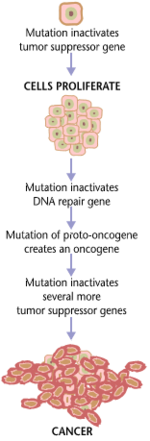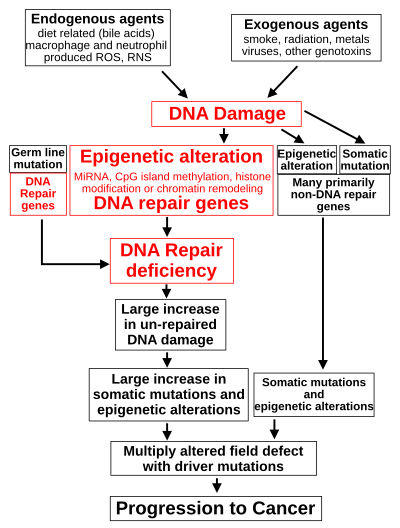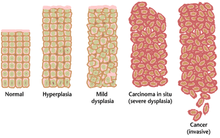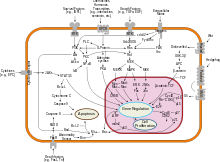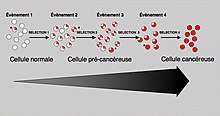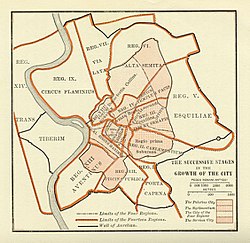| Developmental Disability | |
|---|---|
| Specialty | Psychiatry |
Developmental disability is a diverse group of chronic conditions that are due to mental or physical impairments that arise before adulthood. Developmental disabilities cause individuals living with them many difficulties in certain areas of life, especially in "language, mobility, learning, self-help, and independent living". Developmental disabilities can be detected early on and persist throughout an individual's lifespan. Developmental disability that affects all areas of a child's development is sometimes referred to as global developmental delay.
Most common developmental disabilities:
- Down syndrome is a condition in which people are born with an extra copy of chromosome 21. Normally, a person is born with two copies of chromosome 21. However, if they are born with Down syndrome, they have an extra copy of this chromosome. This extra copy affects the development of the body and brain, causing physical and mental challenges for the individual.
- Fragile X syndrome (FXS) is thought to cause autism and intellectual disability, usually among boys.
- Pervasive developmental disorders (PDD) are a group of developmental disabilities that can cause significant social, communication and behavioral challenges.
- Fetal alcohol spectrum disorders (FASD) are a group of conditions that can occur in a person whose mother drank alcohol during pregnancy.
- Cerebral palsy (CP) is a group of disorders that affect a person’s ability to move and maintain balance and posture. CP is the most common motor disability in childhood.
- Intellectual disability, also (sometimes proscriptively) known as mental retardation, is defined as an IQ below 70 along with limitations in adaptive functioning and onset before the age of 18 years.
Causes
The
causes of developmental disabilities are varied and remain unknown in a
large proportion of cases. Even in cases of known etiology the line
between "cause" and "effect" is not always clear, leading to difficulty
in categorizing causes.
Genetic factors have long been implicated in the causation of
developmental disabilities. There is also a large environmental
component to these conditions, and the relative contributions of nature versus nurture have been debated for decades.
Current theories on causation focus on genetic factors, and over
1,000 known genetic conditions include developmental disabilities as a
symptom.
Developmental disabilities affect between 1 and 2% of the
population in most western countries, although many government sources
acknowledge that statistics are flawed in this area. The worldwide
proportion of people with developmental disabilities is believed to be
approximately 1.4%.
It is twice as common in males as in females, and some researchers have
found that the prevalence of mild developmental disabilities is likely
to be higher in areas of poverty and deprivation, and among people of
certain ethnicities.
Diagnosis and quantification
Developmental disabilities can be initially suspected when a child does not reach expected child development stages. Subsequently, a differential diagnosis may be used to diagnose an underlying disease, which may include a physical examination and genetic tests.
The degree of disability can be quantified by assigning a developmental age to a person, which is age of the group into which test scores place the person. This, in turn, can be used to calculate a developmental quotient (DQ) as follows:
Associated issues
Physical health issues
There are many physical health
factors associated with developmental disabilities. For some specific
syndromes and diagnoses, these are inherent, such as poor heart function
in people with Down syndrome. People with severe communication
difficulties find it difficult to articulate their health needs, and
without adequate support and education might not recognize ill health. Epilepsy, sensory problems (such as poor vision and hearing), obesity and poor dental health are over-represented in this population. Life expectancy
among people with developmental disabilities as a group is estimated at
20 years below average, although this is improving with advancements in
adaptive and medical technologies, and as people are leading healthier,
more fulfilling lives, and some conditions (such as Freeman-Sheldon syndrome) do not impact life expectancy.
Mental health issues (dual diagnoses)
Mental health issues, and psychiatric illnesses,
are more likely to occur in people with developmental disabilities than
in the general population. A number of factors are attributed to the
high incidence rate of dual diagnoses:
- The high likelihood of encountering traumatic events throughout their lifetime (such as abandonment by loved ones, abuse, bullying and harassment)
- The social and developmental restrictions placed upon people with developmental disabilities (such as lack of education, poverty, limited employment opportunities, limited opportunities for fulfilling relationships, boredom)
- Biological factors (such as brain injury, epilepsy, illicit and prescribed drug and alcohol misuse)
- Developmental factors (such as lack of understanding of social norms and appropriate behavior, inability of those around to allow/understand expressions of grief and other human emotions)
- External monitoring factor: all people with developmental disabilities that are in a federal- or state-funded residence require the resident to have some form of behavioral monitoring for each person with developmental disability at the residence. With this information psychological diagnoses are more easily given than with the general population that has less consistent monitoring.
- Access to health care providers: in the United States, all people with developmental disabilities that are in a federal- or state-funded residence require the residence to have annual visits to various health care providers. With consistent visits to health care providers more people with developmental disabilities are likely to receive appropriate treatment than the general population that is not required to visit various health care providers.
These problems are exacerbated by difficulties in diagnosis of mental
health issues, and in appropriate treatment and medication, as for
physical health issues.
Abuse and vulnerability
Abuse is a significant issue for people with developmental disabilities, and as a group they are regarded as vulnerable people in most jurisdictions. Common types of abuse include:
- Physical abuse (withholding food, hitting, punching, pushing, etc.);
- Neglect (withholding help when required, e.g., assistance with personal hygiene);
- Sexual abuse is associated with psychological disturbance. Sequeira, Howlin & Hollins found that sexual abuse was associated with increased rates of mental illness and behavioural problems, including symptoms of post-traumatic stress. Psychological reactions to abuse were similar to those observed in the general population, but with the addition of stereotypical behaviour. The more serious the abuse, the more severe the symptoms that were reported;
- Psychological or emotional abuse (verbal abuse, shaming and belittling);
- Constraint and restrictive practices (turning off an electric wheelchair so a person cannot move);
- Financial abuse (charging unnecessary fees, holding onto pensions, wages, etc.)
- Legal or civil abuse (restricted access to services);
- Systemic abuse (denied access to an appropriate service due to perceived support needs);
- Passive neglect (a caregiver's failure to provide adequate food, shelter).
Lack of education, lack of self-esteem and self-advocacy skills, lack of understanding of social norms
and appropriate behavior and communication difficulties are strong
contributing factors to the high incidence of abuse among this
population.
In addition to abuse from people in positions of power, peer abuse
is recognized as a significant, if misunderstood, problem. Rates of
criminal offense among people with developmental disabilities are also
disproportionately high, and it is widely acknowledged that criminal
justice systems throughout the world are ill-equipped for the needs of
people with developmental disabilities—as both perpetrators and victims
of crime. Failings in care have been identified in one in eight deaths of people with learning difficulties under NHS England.
Challenging behavior
Some people with developmental disabilities exhibit challenging
behavior, defined as "culturally abnormal behaviour(s) of such
intensity, frequency or duration that the physical safety of the person
or others is placed in serious jeopardy, or behaviour which is likely to
seriously limit or deny access to the use of ordinary community
facilities".
Common types of challenging behavior include self-injurious behavior
(such as hitting, headbutting, biting), aggressive behavior (such as
hitting others, shouting, screaming, spitting, kicking, swearing,
hairpulling), inappropriate sexualized behavior (such as public
masturbation or groping), behavior directed at property (such as
throwing objects and stealing) and stereotyped behaviors (such as
repetitive rocking, echolalia
or elective incontinence). Such behaviors can be assessed to suggest
areas of further improvement, using assessment tools such as the Nisonger Child Behavior Rating Form (NCBRF).
Challenging behavior in people with developmental disabilities
may be caused by a number of factors, including biological (pain,
medication, the need for sensory stimulation), social (boredom, seeking
social interaction, the need for an element of control, lack of
knowledge of community norms, insensitivity of staff and services to the
person's wishes and needs), environmental (physical aspects such as
noise and lighting, or gaining access to preferred objects or
activities), psychological (feeling excluded, lonely, devalued,
labelled, disempowered, living up to people's negative expectations) or
simply a means of communication. A lot of the time, challenging behavior
is learned and brings rewards and it is very often possible to teach
people new behaviors to achieve the same aims. Challenging behavior in
people with developmental disabilities can often be associated with
specific mental health problems.
Experience and research suggests that what professionals call
"challenging behavior" is often a reaction to the challenging
environments that those providing services create around people with
developmental disabilities. "Challenging behavior" in this context is a
method of communicating dissatisfaction with the failure of those
providing services to focus on what kind of life makes most sense to the
person, and is often the only recourse a developmentally disabled
person has against unsatisfactory services or treatment and the lack of
opportunities made available to the person. This is especially the case
where the services deliver lifestyles and ways of working that are
centered on what suits the service provider and its staff, rather than
what best suits the person.
In general, behavioral interventions or what has been termed applied behavior analysis has been found to be effective in reducing specific challenging behavior.
Recently, efforts have been placed on developing a developmental
pathway model in the behavior analysis literature to prevent challenging
behavior from occurring.
Societal attitudes
Throughout
history, people with developmental disabilities have been viewed as
incapable and incompetent in their capacity for decision-making and
development. Until the Enlightenment
in Europe, care and asylum was provided by families and the Church (in
monasteries and other religious communities), focusing on the provision
of basic physical needs such as food, shelter and clothing. Stereotypes such as the dimwitted village idiot, and potentially harmful characterizations (such as demonic possession for people with epilepsy) were prominent in social attitudes of the time.
Early in the twentieth century, the eugenics movement became popular throughout the world. This led to the forced sterilization and prohibition of marriage in most of the developed world and was later used by Hitler as rationale for the mass murder of mentally challenged individuals during the Holocaust.
The eugenics movement was later thought to be seriously flawed and in
violation of human rights and the practice of forced sterilization and
prohibition from marriage was discontinued by most of the developed
world by the mid 20th century.
The movement towards individualism in the 18th and 19th centuries, and the opportunities afforded by the Industrial Revolution,
led to housing and care using the asylum model. People were placed by,
or removed from, their families (usually in infancy) and housed in large
institutions (of up to 3,000 people, although some institutions were
home to many more, such as the Philadelphia State Hospital
in Pennsylvania which housed 7,000 people through the 1960s), many of
which were self-sufficient through the labor of the residents. Some of
these institutions provided a very basic level of education (such as
differentiation between colors and basic word recognition and numeracy),
but most continued to focus solely on the provision of basic needs.
Conditions in such institutions varied widely, but the support provided
was generally non-individualized, with aberrant behavior and low levels
of economic productivity regarded as a burden to society. Heavy
tranquilization and assembly line methods of support (such as
"birdfeeding" and cattle herding) were the norm, and the medical model of disability prevailed. Services were provided based on the relative ease to the provider, not based on the human needs of the individual.
Ignoring the prevailing attitude, Civitans
adopted service to the developmentally disabled as a major
organizational emphasis in 1952. Their earliest efforts included
workshops for special education teachers and daycamps for disabled
children, all at a time when such training and programs were almost
nonexistent.
In the United States, the segregation of people with developmental
disabilities wasn't widely questioned by academics or policy-makers
until the 1969 publication of Wolf Wolfensberger's seminal work "The Origin and Nature of Our Institutional Models",
drawing on some of the ideas proposed by SG Howe 100 years earlier.
This book posited that society characterizes people with disabilities as
deviant,
sub-human and burdens of charity, resulting in the adoption of that
"deviant" role. Wolfensberger argued that this dehumanization, and the
segregated institutions that result from it, ignored the potential
productive contributions that all people can make to society. He pushed
for a shift in policy and practice that recognized the human needs of
"retardates" and provided the same basic human rights as for the rest of
the population.
The publication of this book may be regarded as the first move towards the widespread adoption of the social model of disability in regard to these types of disabilities, and was the impetus for the development of government strategies for desegregation. Successful lawsuits
against governments and an increasing awareness of human rights and
self-advocacy also contributed to this process, resulting in the passing
in the U.S. of the Civil Rights of Institutionalized Persons Act in 1980.
From the 1960s to the present, most U.S. states have moved
towards the elimination of segregated institutions. Along with the work
of Wolfensberger and others including Gunnar and Rosemary Dybwad,
a number of scandalous revelations around the horrific conditions
within state institutions created public outrage that led to change to a
more community-based method of providing services.
By the mid-1970s, most governments had committed to
de-institutionalization, and had started preparing for the wholesale
movement of people into the general community, in line with the
principles of normalization.
In most countries, this was essentially complete by the late 1990s,
although the debate over whether or not to close institutions persists
in some states, including Massachusetts.
Individuals with developmental disabilities are not fully integrated into society.
Person Centered Planning and Person Centered Approaches are seen as
methods of addressing the continued labeling and exclusion of socially
devalued people, such as people with a developmental disability label,
encouraging a focus on the person as someone with capacities and gifts,
as well as support needs.
Services and support
Today, support services are provided by government agencies, non-governmental organizations and by private sector
providers. Support services address most aspects of life for people
with developmental disabilities, and are usually theoretically based in
community inclusion, using concepts such as social role valorization and increased self-determination (using models such as Person Centred Planning).
Support services are funded through government block funding (paid
directly to service providers by the government), through individualized
funding packages (paid directly to the individual by the government,
specifically for the purchase of services) or privately by the
individual (although they may receive certain subsidies or discounts,
paid by the government). There also are a number of non-profit agencies
dedicated to enriching the lives of people living with developmental
disabilities and erasing the barriers they have to being included in
their community.
Education and training
Education and training opportunities for people with developmental
disabilities have expanded greatly in recent times, with many
governments mandating universal access to educational facilities, and
more students moving out of special schools and into mainstream classrooms with support.
Post-secondary education and vocational training
is also increasing for people with these types of disabilities,
although many programs offer only segregated "access" courses in areas
such as literacy, numeracy and other basic skills. Legislation (such as the UK's Disability Discrimination Act 1995)
requires educational institutions and training providers to make
"reasonable adjustments" to curriculum and teaching methods in order to
accommodate the learning needs of students with disabilities, wherever
possible. There are also some vocational training centers that cater
specifically to people with disabilities, providing the skills necessary
to work in integrated settings, one of the largest being Dale Rogers Training Center in Oklahoma City.
At-home and community support
Many
people with developmental disabilities live in the general community,
either with family members, in supervised-group homes or in their own
homes (that they rent or own, living alone or with flatmates).
At-home and community supports range from one-to-one assistance from a
support worker with identified aspects of daily living (such as budgeting, shopping or paying bills) to full 24-hour support (including assistance with household tasks, such as cooking and cleaning,
and personal care such as showering, dressing and the administration of
medication). The need for full 24-hour support is usually associated
with difficulties recognizing safety issues (such as responding to a
fire or using a telephone) or for people with potentially dangerous
medical conditions (such as asthma or diabetes) who are unable to manage
their conditions without assistance.
In the United States, a support worker is known as a Direct Support Professional (DSP). The DSP works in assisting the individual with their ADLs and also acts as an advocate for the individual with a developmental disability, in communicating their needs, self-expression and goals.
Supports of this type also include assistance to identify and
undertake new hobbies or to access community services (such as
education), learning appropriate behavior or recognition of community
norms, or with relationships and expanding circles of friends. Most
programs offering at-home and community support are designed with the
goal of increasing the individual's independence, although it is
recognized that people with more severe disabilities may never be able
to achieve full independence in some areas of daily life.
Residential accommodation
Some people with developmental disabilities live in residential accommodation (also known as group homes)
with other people with similar assessed needs. These homes are usually
staffed around the clock, and usually house between 3 and 15 residents.
The prevalence of this type of support is gradually decreasing, however,
as residential accommodation is replaced by at-home and community
support, which can offer increased choice and self-determination for
individuals. Some U.S. states still provide institutional care, such as
the Texas State Schools. The type of residential accommodation is usually determined by the level of developmental disability and mental health needs.
Employment support
Employment support usually consists of two types of support:
- Support to access or participate in integrated employment, in a workplace in the general community. This may include specific programs to increase the skills needed for successful employment (work preparation), one-to-one or small group support for on-the-job training, or one-to-one or small group support after a transition period (such as advocacy when dealing with an employer or a bullying colleague, or assistance to complete an application for a promotion).
- The provision of specific employment opportunities within segregated business services. Although these are designed as "transitional" services (teaching work skills needed to move into integrated employment), many people remain in such services for the duration of their working life. The types of work performed in business services include mailing and packaging services, cleaning, gardening and landscaping, timberwork, metal fabrication, farming and sewing.
Workers with developmental disabilities have historically been paid
less for their labor than those in the general workforce, although this
is gradually changing with government initiatives, the enforcement of
anti-discrimination legislation and changes in perceptions of capability
in the general community.
In the United States, a variety of initiatives have been launched
in the past decade to reduce unemployment among workers with
disabilities—estimated by researchers at over 60%.
Most of these initiatives are directed at employment in mainstream
businesses. They include heightened placement efforts by the community
agencies serving people with developmental disabilities, as well as by
government agencies.
Additionally, state-level initiatives are being launched to
increase employment among workers with disabilities. In California, the
state senate in 2009 created the Senate Select Committee on Autism and
Related Disorders. The Committee has been examining additions to
existing community employment services, and also new employment
approaches. Committee member Lou Vismara, chairman of the MIND Institute
at University of California, Davis, is pursuing the development of a planned community for persons with autism and related disorders in the Sacramento region. Another committee member, Michael Bernick,
the former director of the state labor department, has established a
program at the California state university system, starting at California State University East Bay, to support students with autism on the college level.
Other Committee efforts include mutual support employment efforts, such
as disability job networks, job boards, and identifying business lines
that build on the strengths of persons with disabilities.
Day services
Non-vocational day services are usually known as day centers,
and are traditionally segregated services offering training in life
skills (such as meal preparation and basic literacy), center-based
activities (such as crafts, games and music classes) and external
activities (such as day trips). Some more progressive day centers also
support people to access vocational training opportunities (such as
college courses), and offer individualized outreach services (planning
and undertaking activities with the individual, with support offered
one-to-one or in small groups).
Traditional day centers were based on the principles of occupational therapy, and were created as respite
for family members caring for their loved ones with disabilities. This
is slowly changing, however, as programs offered become more
skills-based and focused on increasing independence.
Advocacy
Advocacy
is a burgeoning support field for people with developmental
disabilities. Advocacy groups now exist in most jurisdictions, working
collaboratively with people with disabilities for systemic change (such
as changes in policy and legislation) and for changes for individuals
(such as claiming welfare benefits or when responding to abuse). Most
advocacy groups also work to support people, throughout the world, to
increase their capacity for self-advocacy, teaching the skills necessary for people to advocate for their own needs.
Other types of support
Other types of support for people with developmental disabilities may include
- therapeutic services, such as speech therapy, occupational therapy, physical therapy, massage, aromatherapy, art, dance/movement or music therapy;
- supported holidays;
- short-stay respite services (for people who live with family members or other unpaid carers);
- transport services, such as dial-a-ride or free bus passes;
- specialist behavior support services, such as high-security services for people with high-level, high-risk challenging behaviors;
- specialist relationships and sex education.
Programs are set up around the country in hopes to educate
individuals with and without developmental disabilities. Studies have
been done testing specific scenarios on how what is the most beneficial
way to educate people. Interventions are a great way to educate people,
but also the most time consuming. With the busy schedules that everybody
has, it is found to be difficult to go about the intervention approach.
Another scenario that was found to be not as beneficial, but more
realistic in the time sense was Psychoeducational approach. They focus
on informing people on what abuse is, how to spot abuse, and what to do
when spotted. Individuals with developmental disabilities don't only
need the support programs to keep them safe, but everybody in society
needs to be aware of what is happening and how to help everybody
prosper.



